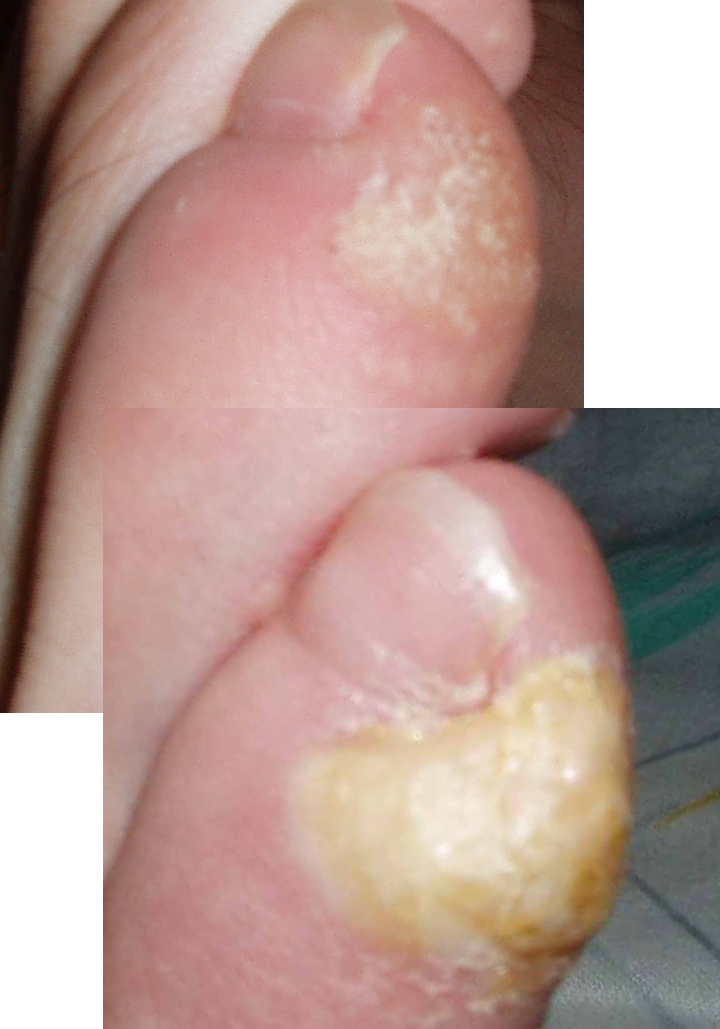
Affiliated Foot Care Center
Call 860•349•8500 or 203•294•4977

Corns don't just happen, they are formed by fairly constant friction, usually between a toe and your footwear.
If there is constant stimulation of the tissue producing the corns, even after the corn is surgically removed, the skin may continue to grow as a corn.
A corn (or clavus) is a specially-shaped callus of dead skin that usually occurs on thin skin surfaces, especially on the outer surface of toes or fingers. They can sometimes occur on the thicker palmar or plantar skin surfaces. Corns form when the pressure point against the skin traces an elliptical or semi-elliptical path during the rubbing motion, the center of which is at the point of pressure, gradually widening. If there is constant stimulation of the tissue producing the corns, even after the corn is surgically removed, the skin may continue to grow as a corn.
The name corn comes from its appearance under the microscope. The hard part at the center of the corn resembles a barley hare, that is, a funnel with a broad raised top and a pointed bottom. Because of their shape, corns intensify the pressure at the tip and can cause deep tissue damage and ulceration. Hard corns are especially problematic for people with insensitive skin due to diabetes.
The location of soft corns tends to differ from that of hard corns. Hard corns occur on dry, flat surfaces of skin. Soft corns are usually found between adjacent toes and stay moist, keeping the surrounding skin soft.
We can prescribe shoes that will prevent corns from forming. We can also prescribe orthotics that are made with shock-absorbent materials and prevent shear forces from getting to your toes. If you are diabetic, you should never use chemical agents to try to remove corns.